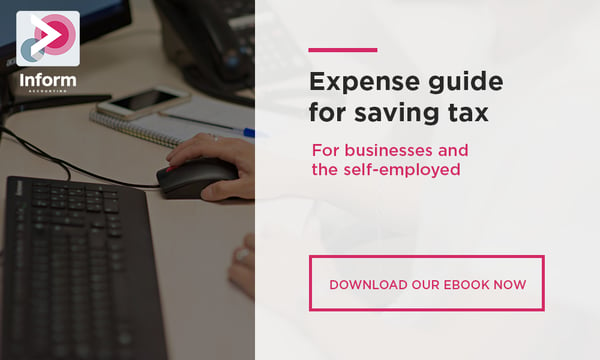BLOG
Sink or swim - saving your business from financial collapse

You may have heard stories of businesses seemingly going bust over night. Well, in the majority cases this simply isn't true. There are signals all the way that indicate whether you’re running a failing business, the trick is to firstly pick up on them quickly, and secondly to do something about it!
You most likely started your business because you wanted to be your own boss, you thought you could do it better than your competitors, or for a number of other personal reasons. It took grit and determination to get to where you are today, so now isn’t the time to give up; it’s time to fight for your businesses survival.
In times of struggle, it can be difficult to think clearly and define a plan of actions to take to get you back on track. So, we’ve outlined a very simple six step process for you to follow to get started on the right track.
Step 1 - Identify issues
It may sound a bit obvious to point out, but it’s arguably the most critical step. It’s impossible to know what actions to take if you can’t understand why your business is failing.
If profitability is the issue, an accounting concept you can apply here is ‘Porter’s 5 Forces’. In this model, Michael Porter suggests that a businesses profitability is affected by 5 different forces;
1. threat of new entrants to the market
2. threat of substitute products
3. bargaining power of customers
4. bargaining power of suppliers
5. competitiveness of the industry
All of these forces push in on industry competitiveness, so balancing these out will help you to manage your profitability better.
For example, you may have had a drop in revenue if a new competitor has entered the market, offering a similar product or service at a lower cost, or a major supplier has gone out of business, leaving you fewer purchasing options and increasing the bargaining power of the supplier to increase prices.
A good place to start is usually when things were going well, perhaps you had a large cash balance, sales were high, it was the good times. Keep searching through your timeline to pinpoint the turning point when things looked like they started to go wrong. Did anything specific happen in that period? Was it something external like a new competitor entering the market, or was it something internal like a price increase?
Whatever the reasons, it’s important that you identify these to move forward. If you’re thinking ‘but nothing has changed’, then you need to take a closer look - there’s no smoke without fire.
Step 2 - Cut your costs
The basic calculation for profit is sales less expenses right? So if sales fall, it makes sense that you need to start looking at reducing your costs.
A good way to try and analyse costs is either by separating them out into
- fixed (those that are the same each month e.g. rent) and variable (those which change with volume)
- essential costs and luxuries
Using the first method can be a good way to re-evaluate your businesses cost structure. Having a high fixed cost base means your business is less adaptable to changes in revenue, putting you at greater risk of failure.
Alternatively, labelling costs as essential and luxury can help you prioritise which costs to cut first. Now isn’t the time to be indulging, it’s survival mode.
Step 3 - Reassess your marketing
Like it or not, your customers are your life support. They inadvertently control the success of your business, because at the end of the day, if they don’t like your product, you don’t have a viable business.
Falling sales is usually a sign that customers have changed their priorities, purchasing habits, or have switched to an alternative product. Here it’s key to keep your existing customers on side, and to win back your old customers.
Have you lost touch with your customers wants and needs? Are you diversifying too much? Keeping up to date with your customers is absolutely essential to ensuring your business is developing in the right direction. It can be as simple as picking up the phone, or conducting a survey (these are usually cheaper to do mass market using online survey software). A relatively small cost now can be outweighed manyfold if it means you’re going to keep customers. After all, it’s more expensive to attract new customers than to retain existing ones.
Now that you know what your customers want and need, you can refocus your efforts on marketing strategies and campaigns that are going to help you deliver just that. It may even be that your product is better suited to a totally different target market that didn’t exist when you first launched your business.
Step 4 - Revitalise your offering
Great, you’ve got more customers - now what?
The worst thing you could possibly do is to invest time and money into rebranding your business to win back customers, only to present them with the exact some offerings that contributed to them leaving in the first place.
Use the feedback from your research activities above to revitalise your service offering. This may mean updating products, developing new services etc, but it’s important that whatever you present as your new offering satisfies your target market.
Some things to think about:
- Cheaper prices
- Better delivery options
- Offers and discounts e.g. coupons, gift cards
- After-sales service
Whilst these may help you to change your service offering, it’s important to make sure you include them in a way that diversifies you from competitors. This is not about catching up with other competitors, but making sure you stand out in the market.
Step 5 - Change your business model
If your business is failing, a simple deduction to make would be that clearly your existing business model isn’t working. So change it.
Adaptability is absolutely key in the modern business world, as technology changes the way both businesses and individuals operate. Constantly changing consumer habits which move evermore to online services are a clear example of this, with thousands of high street shops closing as a result.
‘Doing things the way they’ve always been done’ just doesn’t cut it anymore. Technology is disruptive, and you need to change with the market. If you own a brick and mortar store, you could look at expanding to online sales either as an additional sales channel, or make the move entirely to digital.
What are your more successful competitors doing? Convert the threat into an opportunity to outperform them.
Step 6 - Seek additional financing opportunities
By now you’ve identified where the business is going wrong, and you want to take actions to set it straight, but you don’t have the cash to finance any of it.
There are plenty of financing opportunities out there, with more alternative lenders in the market now than ever before. We’ve got lots of contacts in the market, so if you need any support with funding, please get in touch to see how we can help you.
If your business has been badly affected by the coronavirus outbreak, you may be eligible for a CBILS or BBLS loan, which are available at much lower rates than traditional borrowing. Of course there are several criteria that must be met to qualify for either loan, and you must be able to make the repayments in the future.
Alternatively, you may be able to get investment from friends, family, or other investors e.g. business angels. We’d strongly advise putting together (in writing) a fully realised plan of how you intend to turn the business around, and this should help you to secure investment.
Finally, if you just can’t seem to get any extra funding, there’s always the option to self-fund. You could take on side-projects, or freelancing work to generate additional income that you can then invest into your business.
GET IN TOUCH
Now is the time to take action to ensure your business gets back on form. As Oasis once said ‘don’t look back in anger’, but rather look to the future and make those positive changes.
If you need business planning or cash flow support, give us a call on 0121 667 3882 or email hello@informaccounting.co.uk and our advisors will be happy to help.
Read more of Inform's tax blogs:
Live page: Accounting advice during business disruption
It's that wonderful time of the year...for fraudsters to pray on taxpayers!
Paying yourself a salary: What are the most tax efficient options for limited company owners?
Four key cashflow issues that could cripple your business (and how to avoid them)...




.jpg?width=1500&height=1000&name=amy-hirschi-K0c8ko3e6AA-unsplash-(5).jpg)

